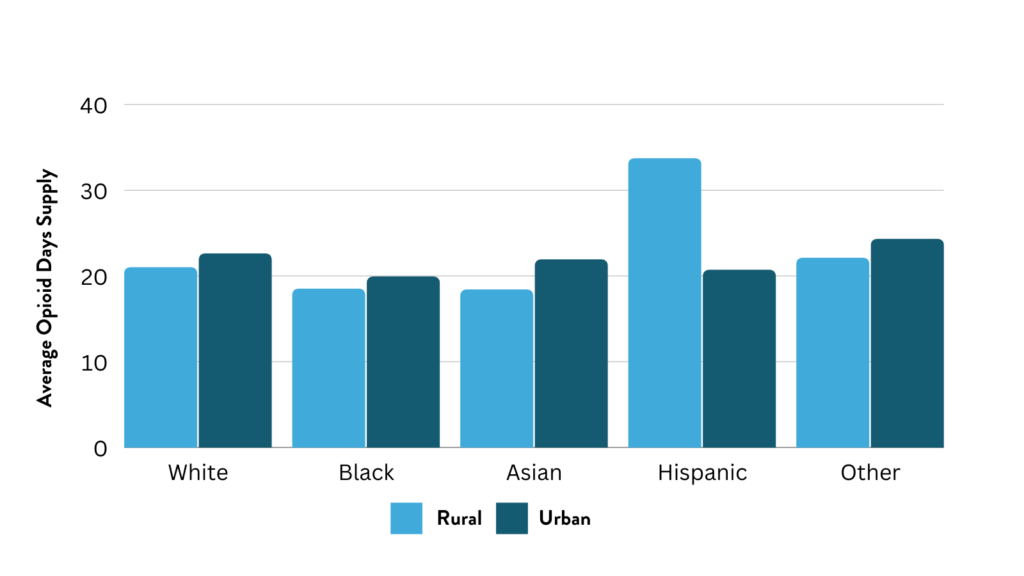Insights,
Insights,
Previous work has found a decreasing trend in the number of opioid prescription rates in dentistry[1]. With the opioid crisis that has gripped the United States, ADVI Health wanted to explore whether important differences were found in urban and rural Medicaid populations.
Using access to the 100 percent T-MSIS Medicaid claims database, ADVI identified dentists prescribing opioids to Medicaid beneficiaries in 2020. Beneficiaries were assigned urban or rural status based on their residential zip code. Dentists prescribed over 8.5 million fills for opioids to over 3.5 million Medicaid beneficiaries. The average days supply was 21.5 days.
While women make up 55 percent of the Medicaid population – in both the urban and rural setting – they made up 61 percent of the beneficiaries with opioid fills.
There were no observable differences in the proportion of opioid prescriptions being prescribed by race in either urban or rural residences. However, rural Hispanic Medicaid beneficiaries were averaging a days supply of over 33 doses, which was notably higher than any other group (Figure 1). Across all other races, days supply was higher in urban Medicaid beneficiaries compared to their rural counterparts.
If you would like to know more about opioid prescribing behavior or additional Medicare or Medicaid data considerations, please get in touch to learn more.

[1] https://jada.ada.org/article/S0002-8177(21)00244-0/fulltext


Head of SAVEs